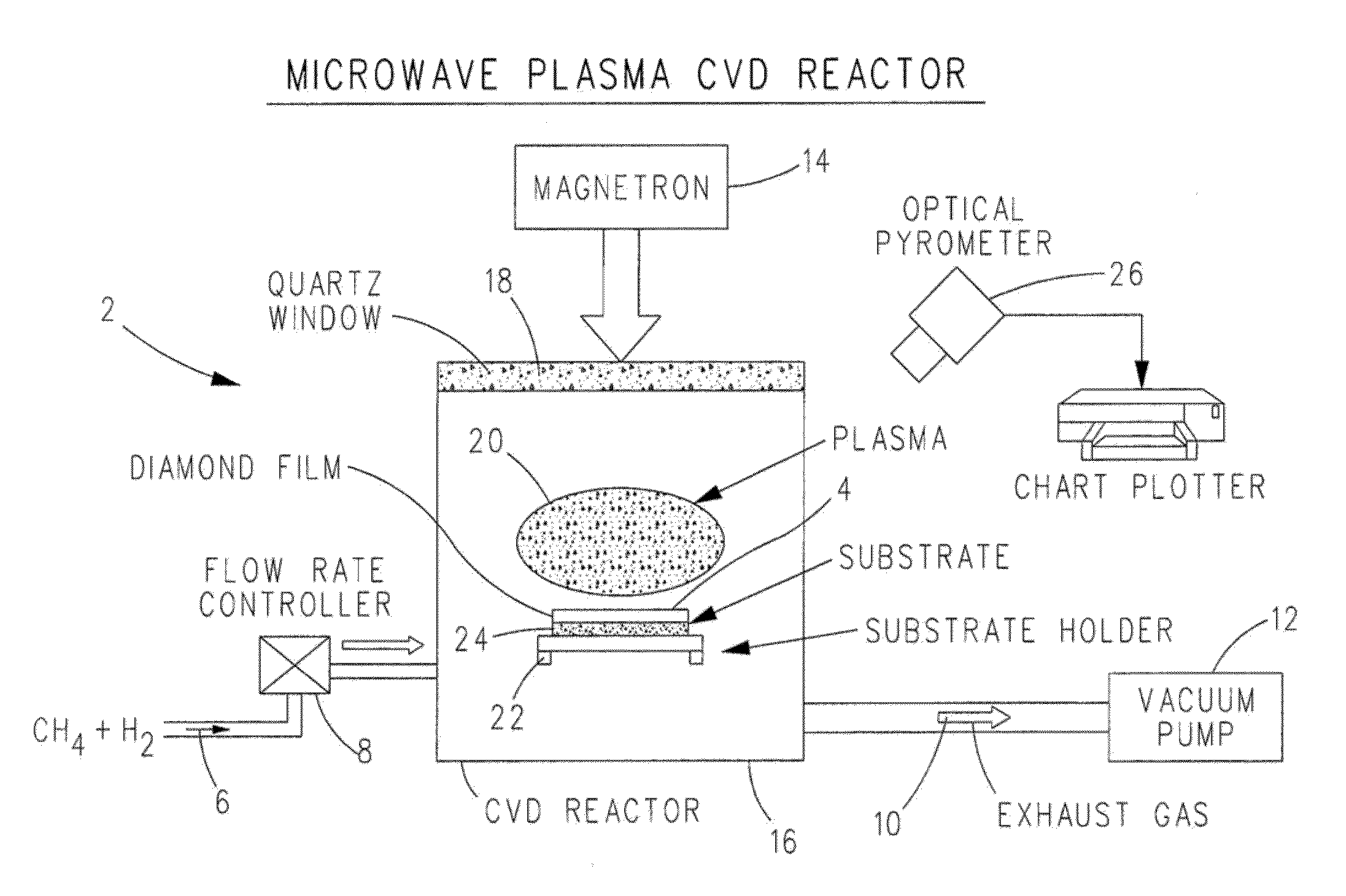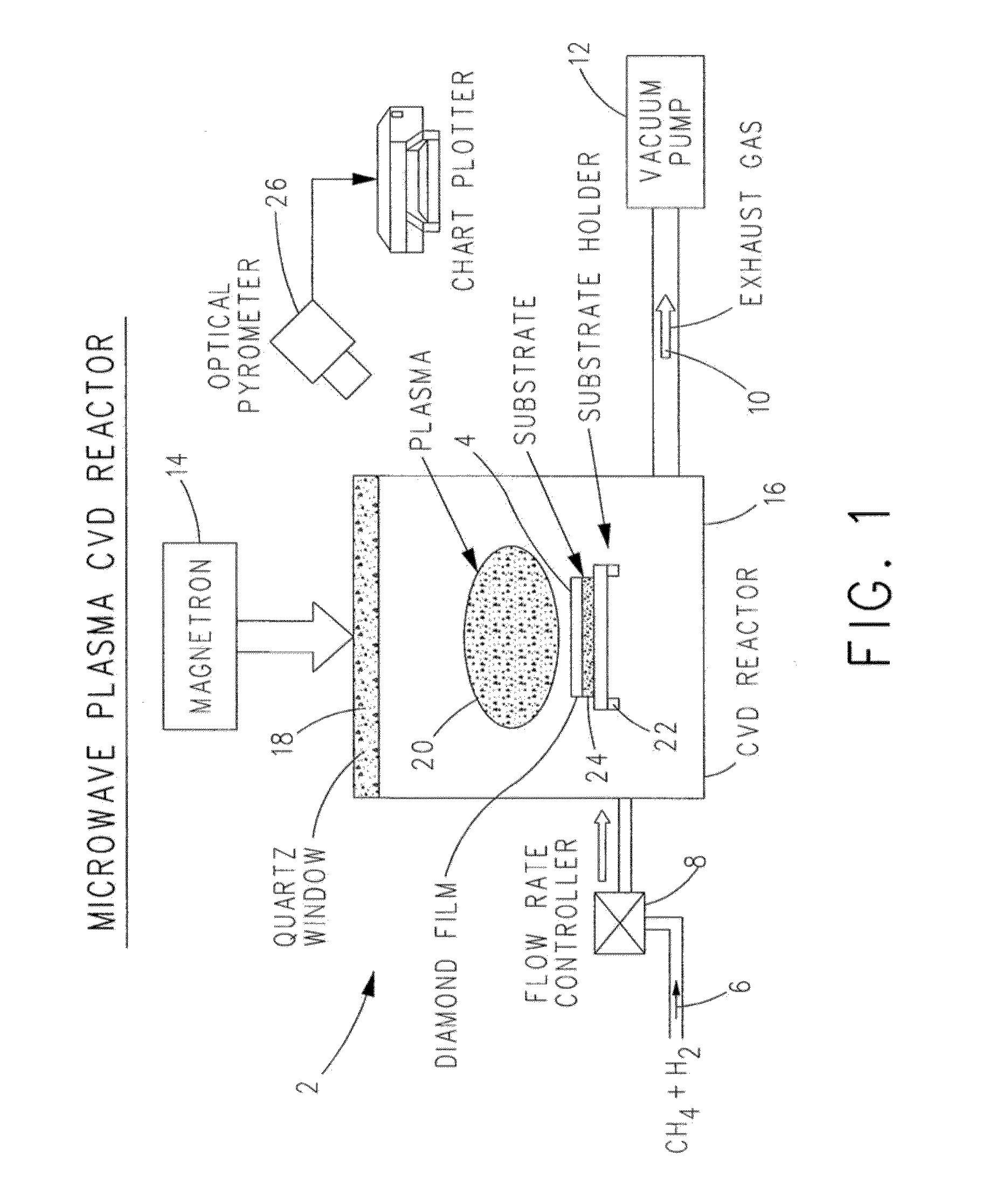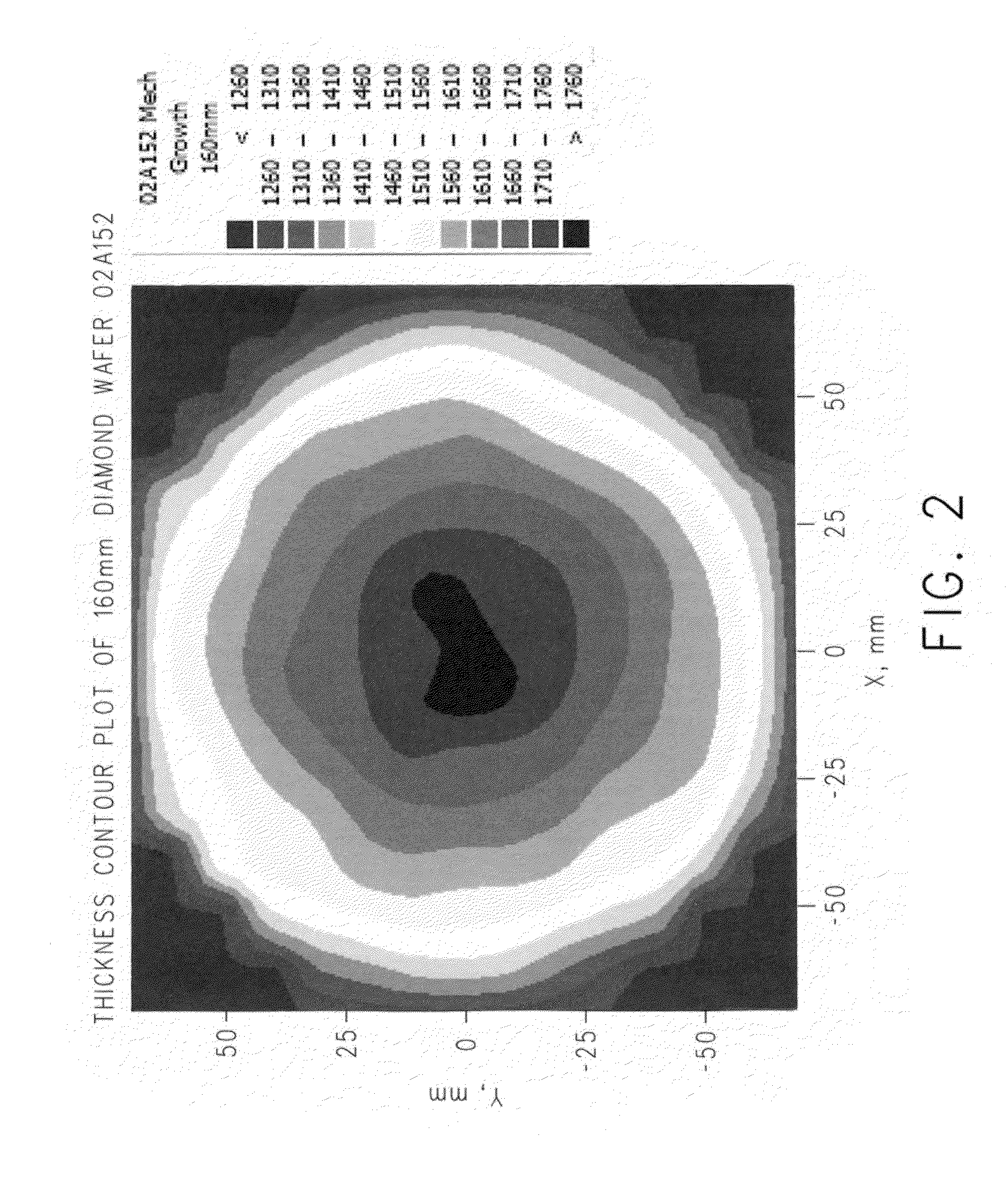Highly Twinned, Oriented Polycrystalline Diamond Film and Method of Manufacture Thereof
a polycrystalline diamond, oriented technology, applied in the field of polycrystalline diamond film, can solve the problems of high cost, limited availability, geometrical dimensions, etc., and achieve the effect of facilitating outstanding surface finishing
- Summary
- Abstract
- Description
- Claims
- Application Information
AI Technical Summary
Benefits of technology
Problems solved by technology
Method used
Image
Examples
example 1
Successful High Speed Growth of Highly Twinned, [110] Oriented Polycrystalline Diamond Film at Temperatures of 1107° C. and 1117° C. for 188 Hours with 3% Methane
[0135]A piece of metallic tungsten of 160 mm in diameter was used as the substrate 24 in microwave plasma CVD reactor system 2 (FIG. 1). A gas mixture 6 of 2500 mL / min hydrogen and 75 mL / min methane was flowed into the microwave plasma CVD reactor 16. After plasma 20 ignition, the microwave power and the reactor pressure were tuned so that the plasma size covered the entire surface of the metallic tungsten substrate 24. After one hour and 12 minutes of chemical vapor deposition of diamond, hydrogen flow was reduced to 2400 mL / min and methane flow was reduced to 72 mL / min. The diamond growth temperature at the center of the substrate was controlled by cooling substrate 24, e.g., via a thermal-electric cooler in contact with substrate 24 or by a fluid cooling substrate 24. A control pyrometer 26 was used to monitor the temper...
example 5
Successful Growth of Highly Twinned, [110]-Oriented Polycrystalline Diamond Film at 1120° C. in a Separate CVD Reactor for 162 Hours with 3% Methane
[0180]A piece of metallic tungsten of 160 mm in diameter was used as a substrate 24 in a separate microwave plasma CVD reactor 16 similar to the one used in Example 1. A mixture of 2400 mL / min hydrogen and 72 mL / min methane was flowed into the microwave plasma CVD reactor 16 with a methane concentration of 3%, also the same as Example 1. After plasma ignition, the microwave power and the reactor pressure were tuned so that the plasma 20 size covered the entire surface of the metallic tungsten substrate 24. The diamond growth temperature at the center of substrate 24 was controlled at 1120° C. by cooling substrate 24, e.g., via a thermal-electric cooler in contact with substrate 24 or by a fluid cooling substrate 24. A control pyrometer 26 was used to monitor the temperature of the diamond 4 growing at the center of the substrate 24 durin...
example 6
Successful Growth of Highly Twinned, [110]-Oriented Polycrystalline Diamond Film at 1120° C. in a Separate CVD Reactor for 90 Hours with 3% Methane
[0191]A piece of metallic tungsten 160 mm in diameter was used as a substrate 24 in a separate microwave plasma CVD reactor 16 similar to the one used in Example 1. A mixture of 2400 mL / min hydrogen and 72 mL / min methane was flowed into the microwave plasma CVD reactor 16 with a methane concentration of 3%, also the same as Example 1. After plasma ignition, the microwave power and the reactor pressure were tuned so that the plasma 20 size covered the entire surface of the metallic tungsten substrate 24. The diamond growth temperature at the center of substrate 24 was controlled at 1120° C. by cooling substrate 24, e.g., via a thermal-electric cooler in contact with substrate 24 or by a fluid cooling substrate 24. A control pyrometer 26 was used to monitor the temperature of the diamond 4 growing at the center of the substrate during diamo...
PUM
| Property | Measurement | Unit |
|---|---|---|
| diameter | aaaaa | aaaaa |
| thickness | aaaaa | aaaaa |
| thickness | aaaaa | aaaaa |
Abstract
Description
Claims
Application Information
 Login to View More
Login to View More - R&D
- Intellectual Property
- Life Sciences
- Materials
- Tech Scout
- Unparalleled Data Quality
- Higher Quality Content
- 60% Fewer Hallucinations
Browse by: Latest US Patents, China's latest patents, Technical Efficacy Thesaurus, Application Domain, Technology Topic, Popular Technical Reports.
© 2025 PatSnap. All rights reserved.Legal|Privacy policy|Modern Slavery Act Transparency Statement|Sitemap|About US| Contact US: help@patsnap.com



